Health and safety performance monitoring, measurement, analysis and evaluation is conducted through the collection of safety data and safety information from a variety of sources typically available to your organization.
Data availability to support informed decision-making is one of the most important aspects of the OH&S Management System. Using this data for safety performance monitoring and measurement are essential activities that generate the information necessary for safety risk decision-making.
Contents
- What is Monitoring, Measurement, Analysis and Evaluation?
- 9.1.1 General
- Measurement Techniques
- Active Monitoring
- Workplace Inspections
- Statutory Inspections
- Reactive Monitoring
- Analysing & Evaluating Performance Data
- 9.1.2 Evaluation of Compliance
- Monitoring, Measuring & Analysis Procedure [Template download]
To verify the safety performance and validate the effectiveness of safety risk controls requires the use of a combination of internal audits, workplace inspections and the establishment and monitoring of SPIs.
Assessing the effectiveness of the safety risk controls is important as their application does not always achieve the results intended. This will help identify whether the right safety risk control was selected and may result in the application of a different safety risk control strategy.
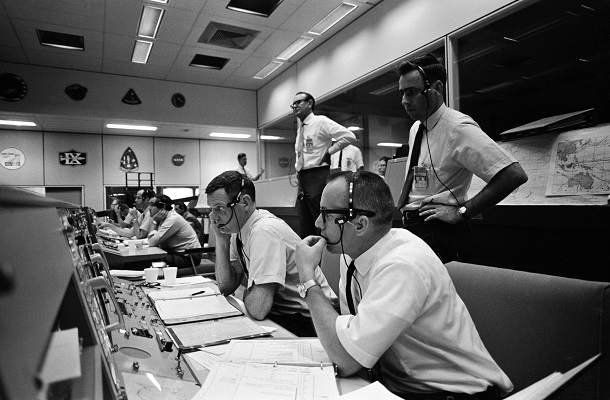
For small organizations, the low volume of data may mean that it is more difficult to identify trends or changes in the safety performance. This may require meetings to raise and discuss safety issues with appropriate expertise. This may be more qualitative than quantitative but will help identify hazards and risks for the organization.
Collaborating with other businesses or industry associations can be helpful, since these may have data that your organization does not have. For example, smaller businesses can exchange with similar organizations/operations to share safety risk information and identify safety performance trends. Organizations should adequately analyse and process their internal data even though it may be limited.
For businesses with many interactions and interfaces they will need to consider how they gather safety data and safety information from multiple organizations. This may result in large volumes of data being collected to be collated and analysed later. These organizations should utilize an appropriate method of managing such data.
Our Monitoring, Measuring & Analysis Procedure is proven to work.
The organization has to determine what it needs to monitor and measure. This includes the determination of the criteria against which the health and safety performance will be evaluated including appropriate indicators.
Performance measurement is an essential part of the safety and health management system.
Key purposes of performance measurement are to:
Periodically review the monitoring and measurement process to ensure that it remains suitable and effective, and leads to continual improvement of the health and safety management system.
Safety monitoring should be recorded on relevant templates and be analysed and discussed at health and safety committee meetings, in order to identify any underlying themes or trends which may not be apparent for looking at events in isolation.
Priorities should be established for necessary remedial action to ensure that safety issues are dealt with and completed within a reasonable time.
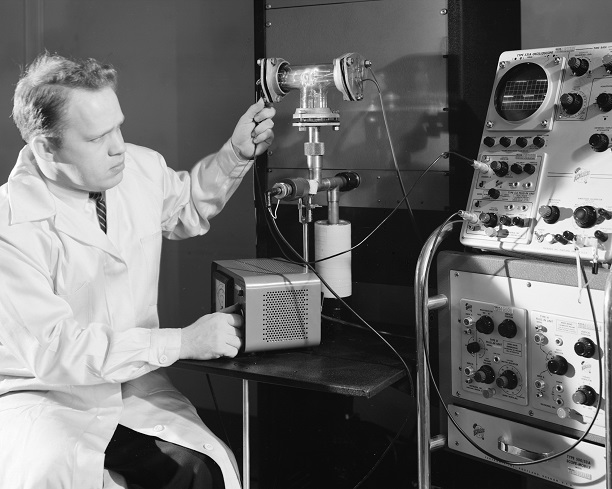
It is often necessary to use both active and reactive and monitoring data to determine whether objectives are achieved. An organisation’s performance monitoring system should incorporate both active and reactive monitoring. Two types of monitoring are required:
No single measure will suitably convey the desired levels of performance, therefore, a mixed model of active (leading) and reactive (lagging) safety measures is necessary to fully define it. Active monitoring should be used to check compliance with the organisation’s safety and health activities, for example to confirm that recently appointed staff have attended an induction course.
Reactive monitoring should be used to investigate, analyse, and record health and safety management system failures, including incidents, near misses, and ill-health cases.
The following are examples of methods that can be used to measure safety and health performance:
Our Monitoring, Measuring & Analysis Procedure is proven to work.
Active safety monitoring should be carried out which includes a review of the health and safety policy; action plans; routine inspections and checks to ensure that preventative and protective measures are in place and effective.
Active monitoring will reveal whether the health and safety management system is functioning correctly.
Typical active measures include:
Every organisation should collect information to investigate the causes of substandard performance or conditions adequately. Documented procedures for carrying out these activities on a regular basis for key operations should be established and maintained.
The active monitoring system should include:
Active monitoring should be proportional to the hazard profile of the organisation and should concentrate on areas likely to produce the greatest benefit and lead to the greatest control of risk.
Key risk control systems and related workplace precautions should therefore be monitored in more detail or more often (or both) than low-risk systems or management arrangements.
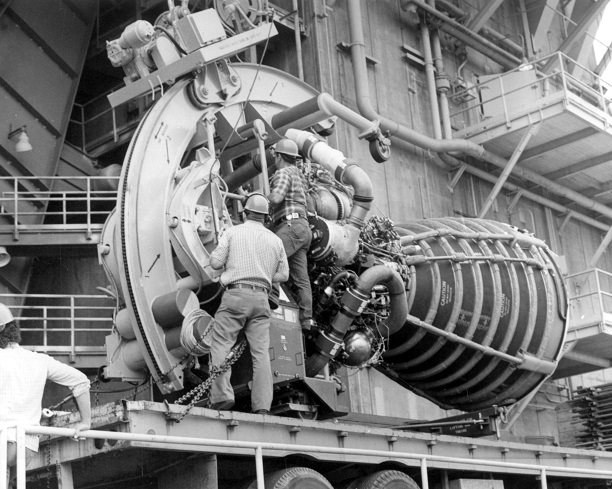
A workplace inspection is a regularly scheduled inspection of work areas, using a checklist to assist with the monitoring and identification of hazards. A system for inspecting workplace precautions is important in any active monitoring programme.
It can form part of the arrangements for the preventative maintenance of plant and equipment, which may also be covered by legal requirements. Equipment in this category includes pressure vessels, lifts, cranes, chains, ropes, lifting tackle, scaffolds, trench supports, and local exhaust ventilation.
The aim of workplace health and safety inspections is to prevent work related accidents and ill health by identifying new hazards; and checking that preventative and protective control measures are implemented and effective.
Regular site workplace inspections will enable your organization to:
Health and safety representatives should assist Managers by helping to carry out routine inspections of their work areas and reporting the findings. They should also provide assistance, and be included in the investigation of accidents, near miss incidents, potential hazards and complaints by an employee relating to health, safety and welfare at work.
Managers and Supervisors are responsible for carrying out monthly routine inspections of their work area. The results of monthly inspections will be monitored by the Department Head in order to improve health and safety performance. Therefore, all inspections should be recorded on a checklist and a copy provided to the Department Head.
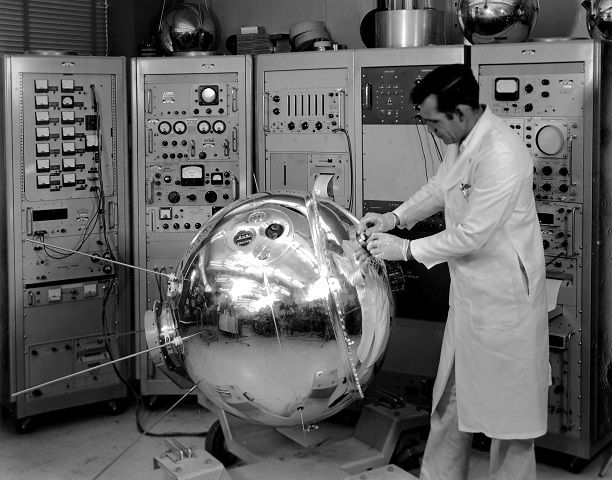
The personnel undertaking workplace health and safety inspections should already be familiar with the workplace activity, premises, equipment, personnel and procedures pertaining to their area of responsibility and should draw on this knowledge when planning the inspection taking into consideration:
Our Monitoring, Measuring & Analysis Procedure is proven to work.
Workplace inspections need to take account of premises, plant, housekeeping, procedures, activities and substances. Inspections should include other workplace precautions, such as those covering the use of premises, other places of work, and systems of work.
The workplace inspection should identify remedial actions necessary, by determining the extent to which procedures and controls are being complied with, as well as the condition of plant, equipment, and premises etc.
When conducting a workplace inspection, particular attention should be given to the existence and maintenance of suitable engineering controls (rather than the reliance on use of personnel protective equipment (PPE)); the arrangements to deal with emergencies; the availability of adequate current information; and if necessary, warnings regarding the nature of the plant/substance hazards concerned (e.g., where and how work activities are being carried out and the potentially exposed population).
Records should be maintained of any workplace health and safety inspections undertaken (copied to the appropriate Health and Safety Representatives) including any inspection notes and checklists raised, as well as any formal post inspection reports and action plans produced; these should be retained for a period of at least three years.
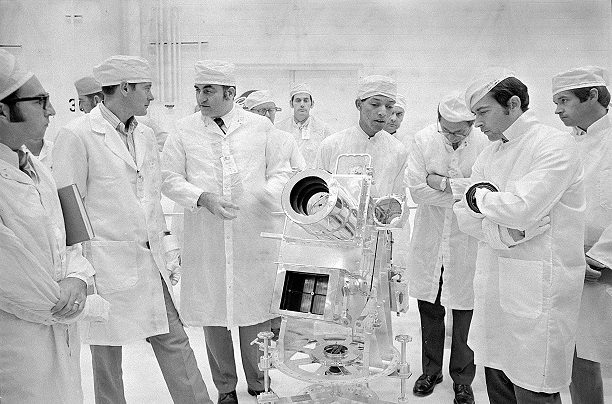
Workplace inspections should be carried out as determined by the level of risk to the area and work practices. The following offers a guide to the frequency; however, an assessment of each individual area needs to occur to determine the frequency.
A suitable programme should take all risks into account but should be properly targeted. For example, low risks might be dealt with by general inspections every month or two, covering a wide range of workplace precautions such as the condition of premises, floors, passages, stairs, lighting, welfare facilities, and first aid.
Higher risks need more frequent and detailed inspections, perhaps weekly or even, in extreme cases, daily, or before use. An example of a pre-use check would be the operation of mobile plant. The inspection programme should satisfy any specific legal requirements and reflect risk priorities.
Suitable schedules and performance standards for the frequency and content of inspection can help. The schedules can be supplemented with inspection forms or checklists, both to ensure consistency in approach and to provide records for follow-up action.
Inspections should be carried out by people who have the necessary skills and training to identify the relevant hazards and risks and who can assess the conditions found.
A properly thought-out approach to inspection will include:
For best results a manager and at least one other worker should be involved in the workplace inspections.
Particular note should be taken of the following:
If a hazard or a nonconformity is identified a corrective action must be identified. All corrective actions must have a person or persons allocated responsibility with time frames and priority. Priority should be determined by the level of risk posed by the hazard.
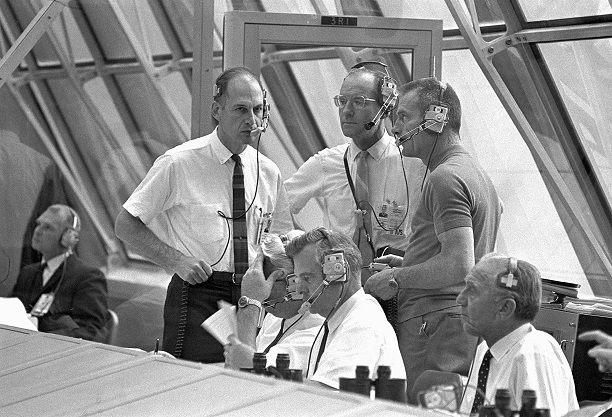
There are a number of specific legal requirements which require statutory examinations and inspections to be completed. This includes the requirement within COSHH 2002 Regulation 9 to thoroughly examine equipment such as local exhaust ventilation at least every 14 months.
Other requirements are in place for the inspection and certification of work equipment such as lifting equipment under LOLER 1998 Regulation 9 on an annual basis. The definition of lifting equipment includes any equipment used at work for lifting or lowering loads, including accessories used for anchoring, fixing or supporting it. It is now referred to as a Thorough Examination, which includes a PUWER 1998 Regulation 6 inspection as well.
PUWER 1998 requires employers to ensure all work equipment is safe for use, maintained in a safe condition and inspected to ensure it is correctly installed and does not subsequently deteriorate. Work equipment is any machinery, appliance, apparatus, tool or installation for use at work.
The PSSR 2000 Regulations apply to owners and users of pressure systems containing a relevant fluid including steam, gases under pressure and any fluid kept artificially under pressure which when released to atmosphere becomes a gas.
There is a legal requirement for Thorough Examination of pressure vessels that contain steam, compressed air and refrigerants. Pressure systems require to be inspected in accordance with a Written Scheme of Examination.
If the statutory inspection for any equipment has not been completed before the expiry date, which is shown next to the equipment description on the equipment rating label and/or certificate, no equipment can be used until statutory testing has been completed. As the equipment no longer complies with legislation it must be made safe by disabling the equipment at the earliest opportunity.
Employees may be asked or targeted with a questionnaire to rate their knowledge or attitude towards health and safety. This allows the measurement of the health and safety culture of the organisation. Ask staff to explain the controls in place for their work and how they have been trained to implement these controls.
This method can be used in conjunction with other methods as the responses can be used to verify a number of aspects of the safety management system e.g., training records, risk assessments etc.
Monitoring worker health can be considered an active monitoring measure, as carrying out measurements of parameters such as hearing (through audiometry) can provide a measure of effectiveness of controls.
Health monitoring processes should systematically detect and assess any adverse effects of work on the health status of workers as it relates to their duties.
It is delivered through real time monitoring of exposure levels, medical assessment and biological monitoring of workers (e.g., blood/urine tests for checking chemical exposure).
This involves walking around the workplace on a set route and counting the number of hazards present on a regular basis. This allows you to acquire a picture on how that area/local manager is dealing with the H&S issues.
If the number of hazards is constantly rising then issues, once identified, are obviously not being dealt with.
Ad hoc visits to selected parts or the entire facility. Especially effective if carried out by senior departmental managers as this demonstrates their commitment to safety. The visit can provide staff with the opportunity to raise safety issues with senior staff. It is vital that concerns are documented and the actions taken are communicated to the individuals or groups who raised the issue(s).

An informal method of identifying potential problems. The results however will just be a 'snapshot' of current practices. This method can be used to identify hazards not previously considered or recently introduced. It can also be used to identify trends if records are kept. For example, observing the same hazard at different locations in the department or in the same location at different times.
These are identical to safety tours but only identify one specific type of hazard e.g., electrical/chemical etc. Sam pling implies an inspection that is limited either to certain areas of the workplace or to certain aspects of workplace activity.
Examination of risk assessments or codes of practice and comparing the requirements set with observed practices. This is a method of identifying whether risk control measures are being used in accordance with approved documentation.
An inspection is completed with the focus on observing unsafe actions rather than hazards associated with plant and premises.
If certain instruments are required for measuring and monitoring performance, the organisation must institute and maintain procedures for calibrating and servicing the instruments. It must retain verification of these calibration and servicing activities.
Measuring instruments might include devices used to detect the presence of harmful gases, radiation, excessive noise or extreme temperatures. Ensure all relevant equipment is on an appropriate monitoring and calibration schedule.
Monitor and analyze reported incidents continuously for incident location, time or period, work process involved, type of hazard, direct and root-causes, etc., to spot trends and identify root-causes of groups of incidents.
Based on the trend analysis, the need to review or reassess any safety measure should be evaluated, documented and acted upon accordingly.
Our Monitoring, Measuring & Analysis Procedure is proven to work.
Reactive safety monitoring relies on taking action after incidents have been reported to prevent the re-occurrence of similar events. Reactive safety monitoring should be triggered after the event such as; injuries and cases of ill health; losses such as damage to property or equipment; incidents with the potential to cause injury, ill health or loss; hazards; weakness or omissions in the safety management system.
Typical reactive measures include:
A variety of safety related statistics can be used to assist in the monitoring and measuring of safety standards. Some measures may be used in-house such as the number of accidents causing injury, near misses, incidents or RIDDOR accidents.
These may be broken down further to give details of the type of accidents, their cause, the type of injury involved, the time of day or the grade/job of the person involved. This can be part of the organisation’s monitoring arrangements for safety. The results of monitoring will be fed back into the safety management system in order to ensure continual improvement.
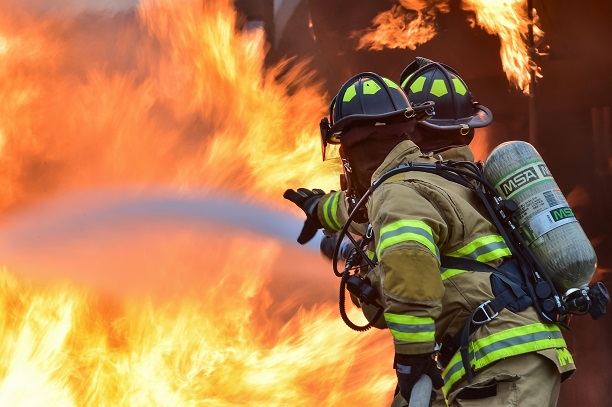
A system of internal reporting of all incidents (which includes ill-health cases) and incidents of non-compliance with the health and safety management system should be set up so that the experience gained may be used to improve the health and safety management system.
The organisation should encourage an open and positive approach to reporting and follow-up and should also put in place a system of ensuring that reporting requirements are met.
The organisation should establish procedures for investigating incidents to identify their causes (see 10.2), including possible deficiencies in the health and safety management system.
Those responsible for investigating accidents, and incidents should be identified and the investigation should include plans for corrective action, which incorporate measures for:
The organisation should implement and record any changes in documented procedures resulting from corrective action.
Monitoring, measurement, analysis and evaluation of OH&S metrics must take into account business context, relevant third parties, policy risks, opportunities and objectives.
Ensure that performance monitoring and measurement results are retained as documented information.
After it is determined what will be monitored and measured, statistical techniques should be applied to interpret the resulting safety data to help your organization understand levels of safety performance and effectiveness.
Data can be collected and reported about a number of different unwanted events such as:
Statistical techniques assist in identifying, analyzing, interpreting the monitoring and measuring safety data that is collected and reported about a number of different parameters in the previous sections.
This data must be analysed and evaluated to see if there are any:
Trends – consistent increases/decreases in the number of and types of events over a period of time
Patterns – collections or hot-spots of certain types of events
This analysis usually involves converting the raw data (i.e., the actual numbers) into an incident rate so that more meaningful comparisons can be made.
Data on these indicators should be collected and analysed by the Health & Safety Department to ascertain any patterns or trends, and is converted into an incident rate – based on the hours worked - so that meaningful comparisons can be made from period to period.
For the analysis of nonconformities and incidents, appropriate statistical and non-statistical techniques are applied.
In addition to the analysis within the data sources, there is also analysis across the data sources to determine the extent and significance of the nonconformity or incident. The linkage of data from different data sources is referred to as ‘horizontal analysis’
Our Monitoring, Measuring & Analysis Procedure is proven to work.
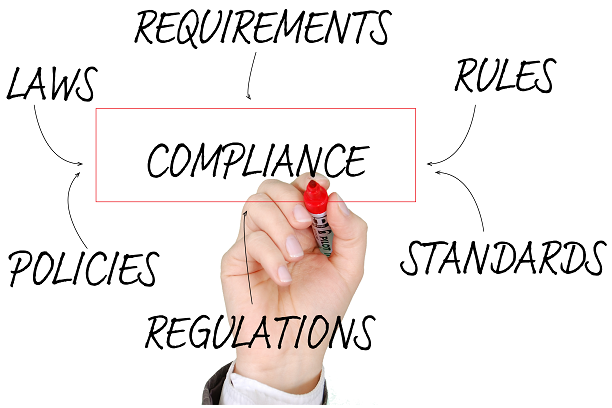
Access to current relevant legislation, Standards, codes of practice, agreements and guidelines is primarily available through electronic media available via using http://www.legislation.gov.ukand other external internet sites. Where electronic information is inaccessible, relevant legislative material should be maintained in hardcopy format and controlled accordingly.
A legislative compliance reviews should assess the organisation's health and safety policies, guidelines or procedures that comprise its OH&S management system against any legislative, industry codes of practice or standards at the desktop level.
Legislative compliance reviews should also be conducted when OH&S management system documentation is due for review or due to external changes, e.g., changes or introduction of legislation, codes of practice or national standards.
The compliance review should include identifying and referencing legislative requirements related to the health and safety policy, guideline or procedure and incorporating these needs into existing processes. The revised health and safety policy, guidelines or procedures as a result of the legislative compliance review must be communicated.
The Certification Auditor’s role is not to verify the result of the compliance audit, but to assess the effectiveness of the audit process and taken actions. An understanding of compliance status must be demonstrated. Therefore, your organization must have the means (inspections, tests, audits) that are frequent and robust enough to ensure that knowledge and understanding of compliance status is maintained.
Updated: 27th April 2022
Author: Richard Keen

Richard is our Compliance Director, responsible for content & product development.
But most importantly he is ISO's biggest fanboy and a true evangelist of the standards.
Learn more about Richard
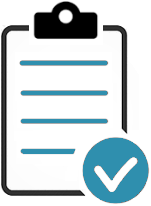
Don’t Try to Manage It All Alone!
Our ISO Auditors and OH&S Trainers have been in this industry for years, and since 2002 we’ve been providing thousands of small businesses and large corporations with the tools they need to get certified.
Instead of trying to create everything you need to follow this process from scratch, use ours. We have procedures, templates, checklists, process maps, forms and gap analysis tools to help you control your documented information without missing a single input or output.
Before you invest all the hours reinventing the wheel, before you spend countless dollars outsourcing the task — try our templates.
| QMS ISO 9001 |
EMS ISO 14001 |
OH&S ISO 45001 |
|
|
Monitoring, Measuring & Analysis Procedure The purpose of this procedure is to establish and define the roles and responsibilities for detailed health and safety monitoring, measurement, analysis and performance evaluation. The process includes the recording and tracking of progress against identified actions and targets which provide the mechanism for safety assurance that ensures our safety processes and systems are able to effectively manage our safety risks. Where assurance cannot be given, it provides an opportunity for prompt intervention and action planning. Forms & Reports also included:
>> Free Download - Control of Calibrated Equipment Procedure - this will give you a good idea of what to expect when you purchase the procedure. |
$19 USD |
Pay by Credit Card, Debit Card, PayPal or Apple Pay.

 |
Please read our Money Back Guarantee. |
Bought by Small Businesses and Large Corporations our templates have been sold online and CD since 2002.
Used by:
The Templates are used by first-timers following our step-by-step, clause-by-clause guidance documents; and experienced Quality Managers wishing to streamline and improve their existing documentation.
The application of our templates and OH&S manuals is scalable and generic; regardless of the size and type of organization. The elements that form the Health and Safety Management System Template are the same.
1. Our customizable templates save you time and money by offering a streamlined process to create your quality documentation
2. They’ve got everything you need in one simple template
3. Proven to work our templates have helped thousands of businesses big and small achieve certification
4. Documents use styles to make reformatting and rebranding a breeze
5. Our templates are generalizable for any industry or sector. The application of our templates is scalable and generic; regardless of the size and type of organization.